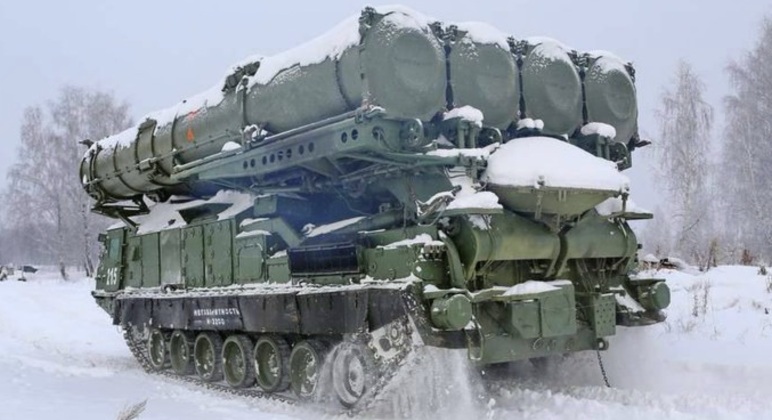In response to air strikes by Ukrainian Air Force fighters on targets in Russia’s Belgorod region, air defence systems deployed to defend the area have reportedly broken a world record for the longest ranged surface to air kills. A Ukrainian Su-27 and Su-24 aircraft, which are thought to be some of the last of these relatively scarce and heavyweight classes operational after over six months of war, were responsible for the strikes on Russian targets and benefit from significantly longer ranges and higher weapons payloads than Ukraine’s drones and more widely used lighter MiG-29 fighters. Both moved in at a very low altitudes, rising to fire rocket pods and again descending as part of a flight pattern referred to locally as “jumping,” before being fired on by Russian surface to air missile batteries – specifically an S-300V4 system. The missile system neutralised both aircraft at extreme ranges of 217km, surpassing the 150km range kill previously recorded by a Russian S-400 system against a Ukrainian Su-27 over Kiev in March, with this achieved despite the Su-27’s high manoeuvrability and impressive flight performance designed to allow it to effectively evade standoff missile attacks.

The S-300V4 entered service in the early 2010s, and integrates many of the same technologies as the older but better known S-400. It is notably more expensive than the S-400, but benefits from higher mobility, a shorter set-up time and superior capabilities against cruise and ballistic missiles. The system uses tracked rather than wheeled vehicles due to its intended role of accompanying advancing infantry, and has access to a range of missiles including the 40N6 which has a 400km range and a high hypersonic speed exceeding Mach 14. It integrates a second missile type that may have been responsible for the kill, the 48N6DM which has a 250km engagement range and can also intercept hypersonic targets. The fact that the Su-27 and Su-24 were reportedly flying at low altitudes indicates that the 40N6 may have been used, since the missile has an entirely unique trajectory and sensor suite that are particularly well optimised to engaging very low altitude targets over the horizon.
The 40N6 can engage targets as low as 5 metres off the ground even at 400km distances, and climbs into space before descending to impact providing its onboard radar with greater coverage and a totally unrivalled performance at ranges over 250km. The missile has double the range of its top Western competitors, and is deployed by both Chinese and Russian S-400 units while also being compatible with the S-300V4. It was for years the world’s longest ranged anti aircraft capable ground launched missile, although new missiles integrated onto the S-500 system less well suited to tackling fighter sized aircraft have reportedly surpassed it. The kill against a Su-27 reflects Russia’s overwhelming superiority in anti aircraft capabilities, which was also reflected in the results of air battles between modern Russian fighters and Ukrainian Su-27s earlier in the campaign, contrasting with the state of affairs on the ground where Russian Army units have suffered multiple serious setbacks.
